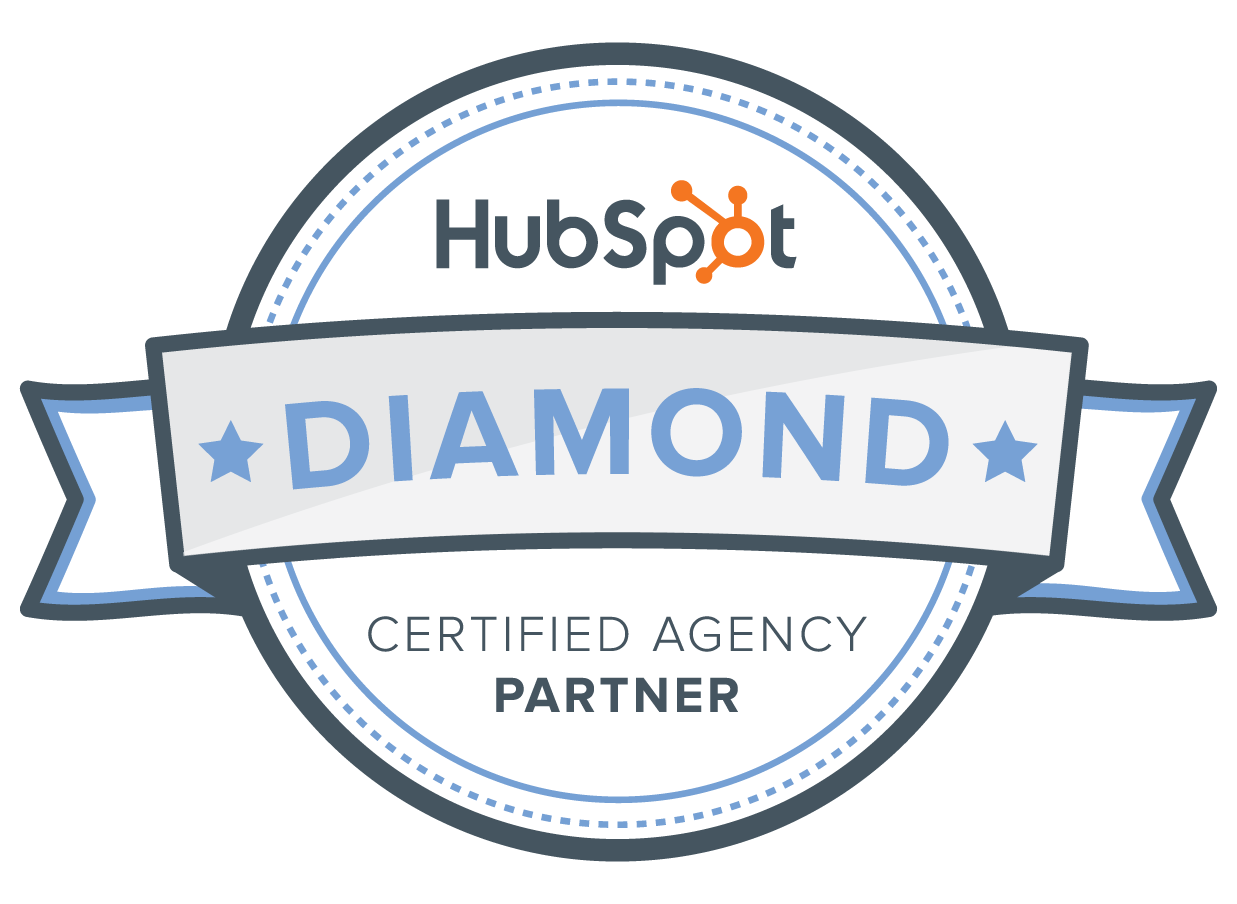Does a SaaS brand really need a specialized marketing strategy?
Absolutely.
A good marketing strategy will always account for the details, and in SaaS, those details are especially critical. In this article, we’ll look at what makes SaaS marketing a unique challenge — and what you’ll need to do to scale your software brand successfully.
What is SaaS marketing? And what makes it unique?
SaaS marketing is a specialized strategy for companies that offer software products and solutions on a subscription basis. Specialized is the key word here — as a B2B SaaS company, your ideal strategy won’t necessarily match up with a generic marketing model, and there are a few reasons for that:
Software is abstract.
Software solutions — especially complex, professionally-oriented solutions — are inherently a bit nebulous. Representing abstract concepts and needs to your audience within the short time you have to capture their attention isn’t easy. A lot of software solutions in the B2B space can look different depending on the use case and the environment in which they’re deployed. You need to know exactly what your audience is looking for so they’ll recognize your product as a viable solution for their business.
Your audience is small.
If your solution is targeting a niche market, you have a much smaller population to work with. In some ways, this is good — you can focus your campaigns and messaging — but it also raises the threshold for hitting a good success rate. A small audience means you might also be working with less data. This can make producing relevant content harder, especially if your marketing team doesn't have dedicated SaaS experience.
Buy-in can be difficult.
You’ve probably experienced this from the other end before — upper management wants to implement a new software program and the rest of the company doesn’t want to upend their entire workflow for something that might not make life easier. Your SaaS marketing strategy needs to address those concerns and concretely demonstrate 1) how easy it is to get started and 2) how much it will improve daily work. Depending on the type of solution you offer, you may be tasked with selling technology to an audience that is not tech savvy. This makes it critical that you recognize where your professional language differs from theirs and craft your messaging in a way that translates.
The sale doesn’t end.
In many industries, we talk about customer retention and maintaining good relationships to upsell in the future. But in an industry where a sale is a discrete process, this will look different than in SaaS, where your business relies on continued subscriptions. You need to keep customers happy and provide value continuously to win the next contract, not just at certain touchpoints to make an upsell. (Don’t miss: 6 B2B Strategies to Build Retention and Reduce Churn.)
In the rest of this article, we’ll walk through the specific actions that will help you market your SaaS solutions in a way that addresses these unique concerns. These provide a good foundation for any SaaS marketing strategy, but the specifics of your solution will govern how much you’ll want to supplement this with additional strategies (especially if you’re looking at a go-to-market strategy, rather than simply scaling an established business).
Step 1: Research your B2B SaaS audience
A buyer persona is a semi-fictional representation of your ideal customer, based on data and market research on your existing customer base. Once you have the right information, a marketer will be able to pull a larger story out of the details that helps you address the right concerns for your audience in your messaging.
But what’s unique about audience research in SaaS, and what do you need to know to set the foundation for a good SaaS customer acquisition strategy?
A great place to start is by looking at a typical customer journey within the SaaS marketing funnel. Here are a few things to guide where you focus at each stage:
- Awareness: SaaS customers are often in the market for a new solution because 1) they hate their current tool or 2) they need to do something new that their current tool isn’t capable of doing. Research your competitors and what your target types of customers are discussing in professional spaces (like LinkedIn) to find specific points to address in your messaging.
- Consideration: As we’ve said, SaaS is pretty abstract, so you need to provide plenty of straightforward materials that demonstrate your solution in a concrete way. Video demos, tutorials, and infographics are particularly helpful here.
- Decision: Offering demos is a cornerstone of SaaS marketing. It provides a much more enticing step to engaging with your brand than simply talking to a representative and can show your customers better than anything else what they’re buying. A guided demo that provides a good impression of the onboarding process is also a good option here.
Step 2: Decide your SaaS marketing channels
Marketing channels are all the different methods you use to reach your audience (paid advertising, organic search (SEO), referrals, affiliates, campaigns, etc.).
If you already have some marketing channels running, you can use your analytics data to figure out where you’re most effective. Where your audience will gravitate does depend somewhat on the product you’re offering, but there are a couple that are typically must-haves for SaaS:
- Organic search (SEO): This is a big one for any industry, but perhaps SaaS even more so. The digital nature of the solution lends itself to online research especially well, and it’s well accepted now that the first place potential buyers go to research is Google. Organic search is driven by ensuring your website is well run on the technical side (and this is especially true for a SaaS company — make sure your website demonstrates your development credentials) and by producing helpful content that gets picked up by search engines. Content marketing is a huge topic for SaaS that we’ll cover in the next section.
- Paid ads: Google AdWords is often a big player here, but you’ll also find opportunities to boost posts on various social media platforms. It’s critical to be strategic about these to make sure you’re getting good ROI, but ads can be huge if your website is low on search authority and you want to focus on some short-term gains. Learn more about how a paid search strategy works.
We almost always recommend a combination of email and social media marketing, too. For social, appropriate platforms might differ depending on your product. LinkedIn is generally a good go-to for any solution with a professional application, but some B2B brands have found success using more unlikely platforms like TikTok.
Step 3: Prepare to invest in content marketing
We think content marketing is particularly helpful in SaaS because (when done right) it demystifies your solution and helps potential customers identify exactly how that solution can meet their needs.
Content to attract
Since organic leads are so important to SaaS success, our first recommendation is to work on your website. You need product and solution pages that target the language your customers use and you need a resource center that answers the questions your customers have with helpful, evergreen content. This content needs to address needs at every stage of the funnel we discussed earlier. Remember, your customers are online searching for answers, often before they realize they need a particular solution. Being in front of them at this early stage establishes awareness and trust, setting you up for success later on in their journey.
Content to convert
Once you get customers to your site, either organically or through paid ads, you need to have clear, consistent messaging that communicates your value and supplementary content (graphics, videos, guides, case studies, etc.) that gets into the specifics of what your solution can do. If you can offer a demo, you’ll want to make sure you have plenty of content here that builds up to that conversion point.
Effective content marketing drives both leads and conversions. If you want to establish a pipeline for your business that continues to deliver, we recommend using a SaaS content marketing agency to ensure you’re getting effective messaging that accomplishes both goals — leads and conversions.
Step 4: Make your website a priority
There are some industries that can (just barely) get away with substandard website design. SaaS is not one of them.
The backend on your site might have nothing to do with the performance of your actual software, but potential customers won’t see it that way. A brand that’s built on technology needs to have a great website to be taken seriously.
The good part about being in SaaS here is that you likely have a number of capable connections that can develop a great site for you. You just need to understand (and convince your stakeholders) that your site is worth the investment.
Your site should be fast, well-organized, accessible, and aesthetically pleasing to check off the surface level website goals. Beyond that, you need to ensure your site is built to convert. Getting content, UX, and development teams together can be a huge step for building a consistent website architecture and experience that looks and performs well.
Step 5: Align your sales and marketing
Alignment isn’t just for SaaS, but there are a few points specific to the industry that you’ll want to hammer out between your Sales and Marketing teams:
- Pricing models: The subscription model is a key part of your offering. While it’s almost certain your salespeople will know this information inside and out, you might be surprised by how often marketing teams get left in the dark. You don’t need to publish the pricing in your marketing materials, but having a full picture of what is offered at what tier will make a huge difference in how your marketers craft your messaging and write your content.
- Pre-sale value: Salespeople might lead potential buyers through presentations, personalized consultations and demos that never make their way to marketing. If there’s additional value like this that you provide before the customer makes their purchase, be sure to 1) inform Marketing and 2) give Marketing a chance to contribute their thoughts on the messaging.
- Technical details: There are always details that Sales has that Marketing knows nothing about. Perhaps during your sales conversations, you often get questions about whether your product integrates with other specific applications. If you don’t share this information with your Marketing team, your messaging might never mention this amazing benefit.
Something that seems like a small detail to your sales team might inspire new ideas in Marketing, so keep everyone informed about the details of your product. B2B SaaS solutions aren’t straightforward and might not even be accessible to some members of your team. You’ll be able to provide the best experience to your buyers if everyone knows the product’s intricacies.
Step 6: Set goals to measure your success
Key performance indicators (KPIs) are the metrics you use to track performance and measure success against your goals. In addition to tracking general marketing metrics — for example, organic traffic to your website, bounce rates, conversion rates on landing pages, and so on — you’ll want to think about how to tie those metrics to more measurable target outcomes.
Some of the metrics that drive SaaS success:
- Monthly Recurring Revenue: The average revenue per account x the total number of accounts that month
- Change in Product Usage: The software usage during existing month - usage during previous month
- Free Trial to Paid Customer Ratio: Number of free trial sign-ups that led to a paid customer / total number of free trial sign-ups during a particular time frame
- Demo to Paid Customer Ratio: Number of demo sessions that led to a paid customer/ total demo participation during a particular time frame
- Customer Churn Rate: Number of lost customers within a certain time frame divided by the total number of customers you had at the beginning of your time frame
- Revenue Churn: Total revenue lost during a certain time period (usually monthly) / total revenue you had at the start of that time frame
- Customer Lifetime Value: Average annual spend x average length of customer
- Customer Acquisition Cost: Total sales and marketing spend/number of new customers
For full details and tips on each, check out our guide to SaaS metrics and KPIs.
Step 7: Continue showing value post-sale
We’ve mentioned it a few times, but we want to drive it home: the SaaS post-sale phase is incredibly important for customer retention and referral marketing.
The subscription model of SaaS means its an ongoing sales process, and that makes onboarding programs and customer support particularly crucial. Once the sale is closed, you need to prioritize adoption on the client’s end by offering walkthroughs and setting up resources on your side to address customer questions. At this stage, you may be interacting with employees who aren’t decision makers at their organization — remember that their use of the tool is often what will determine your success, so provide plenty of attention and support to maintain buy-in.
As a customer becomes more familiar with your product, they might lean on you less, but you’ll still need to be ready to support as specific needs on the buyer’s end present new challenges. Staying actively involved will also give you the opportunity to suggest new features or upgrades that are well-suited to your customer.
Bonus: Make SaaS marketing easier with the right team
A good SaaS strategy needs to do more than rehash the basic steps of a generic marketing plan. Working with a SaaS marketing agency that has plenty of experience in the industry makes it much easier to get that level of specialization. You’ll have partners that already know the typical customer journey, common pain points, and the channels and content that drive great results. With a solid foundation already in place, a SaaS agency can focus on the unique features of your brand that will appeal to your audience.
We have a few tips for choosing a SaaS marketing agency to help you get started. And, if you choose to take the agency route, we’d love to be your first stop. We have the B2B and SaaS experience to deliver results, and we take a lot of care to make sure we’re the right fit for your needs. We’ll help you figure out where your marketing focus needs to be — throw us a line to test us out!








